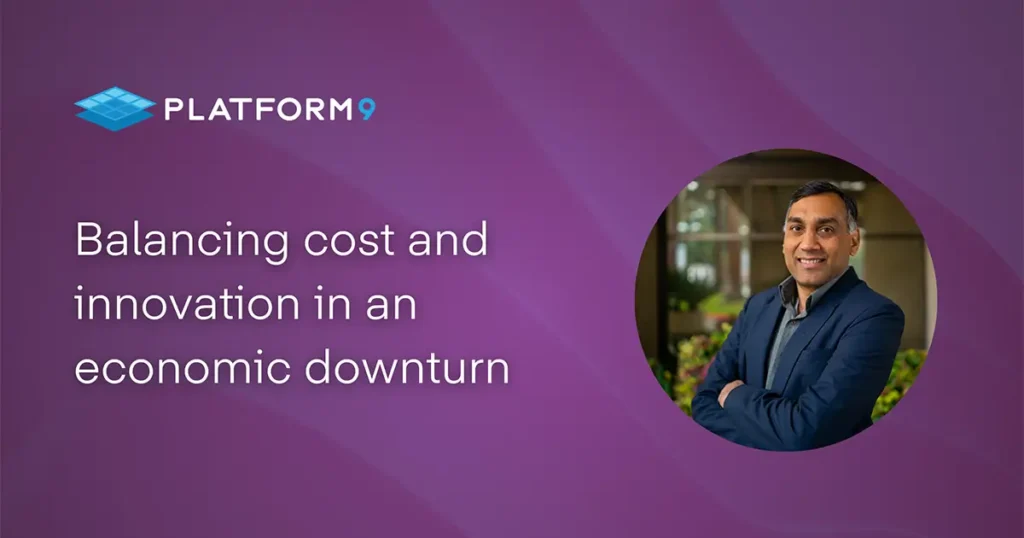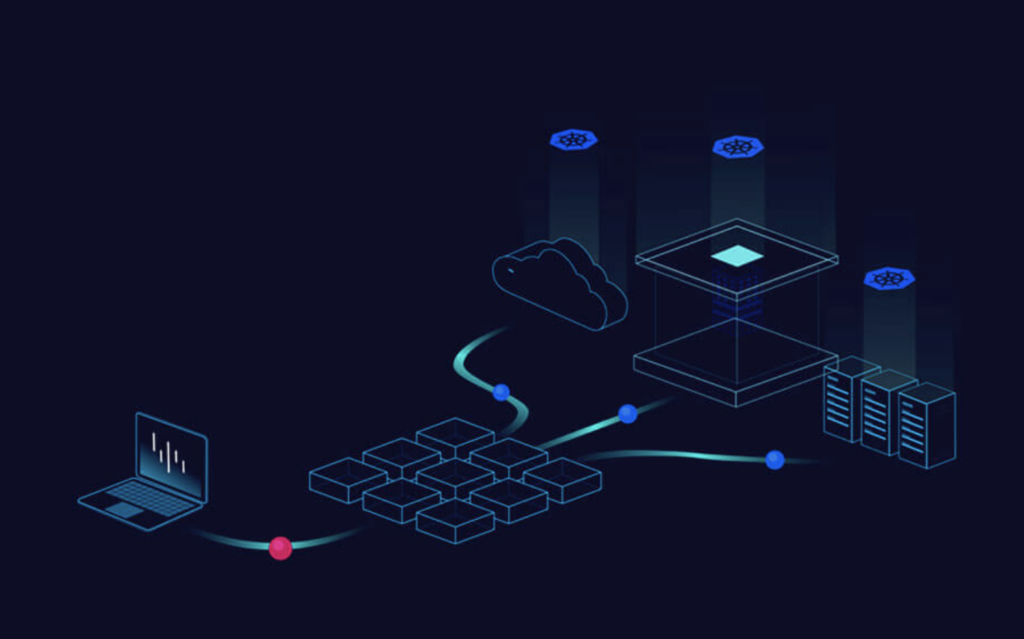Kamesh Pemmaraju and Ron Haberman of Platform9 joined Howard Holton, GigaOm CTO, to discuss an important topic that technology leaders are facing today: how do you balance costs while ensuring sustainable growth? How can organizations modernize legacy applications, manage legacy infrastructure, while also building towards their future modern cloud infrastructure and applications?
Recent research shows that as much as 60% of organizations identify their cloud costs as being too high, with only 30% being able to identify exactly where their spending is going. In a down economy, where every cent in a budget is critical for maintaining market position and achieving growth, enterprises must be conscious in regard to cloud spending. The pressure to reduce spend while still finding ways to advance technology initiatives that support growth is real,”
In this informative webinar, Kamesh, Ron, and Howard explore these topics and more. We’ve summarized some of the key points below. You can also go to the video to watch this entire informative and in-depth webinar right now.
Is repatriation from the public cloud real? Is it happening now?
Repatriation from the public cloud is happening, particularly for companies that didn’t focus on reducing technical debt and leveraging the agility of the cloud. Many companies are realizing that running their data centers the same way in the cloud is often more expensive and are bringing workloads back on-premise.
While there is a shift back to on-premises, smart organizations are focusing on learning from the cloud and adopting cloud-like practices in their own data centers. The goal is to have on-prem infrastructure that resembles and acts like a cloud, leveraging the benefits of both environments. Platform9’s private cloud solution enables you to do exactly that.
Is there a decrease in innovation and investment due to budget constraints?
Unfortunately, it seems that some companies are indeed neglecting innovation, which is a poor decision. We’ve observed shrinking investment funds and reduced data teams and projects within organizations. Often, the return on investment (ROI) of projects is not thoroughly evaluated after completion, leading to missed benefits. As a result, there are budget cutbacks and a requirement to do more with fewer resources.
This shift is impacting both operational budgets (brown) and innovation budgets (green), making it challenging to achieve desired outcomes. It feels as though the abundant resources once available have now transformed into a scarce and insufficient allocation for progress.
How can companies optimize their spending?
Companies can optimize spending by assessing their capabilities and focusing on what they are good at. By outsourcing certain tasks to trusted partners, companies can free up resources to deliver more value to the business. It is important to prioritize trust over price when selecting partners and leverage existing relationships to negotiate better value.
How can companies optimize the virtualization license tax?
Companies can optimize the virtualization tax or license tax by leveraging open-source solutions that resemble cloud capabilities and can be run on-premises. By reducing reliance on the cloud and using it primarily for agility purposes, companies can save costs and make their on-premises infrastructure look and operate more like the cloud.
When companies move towards open source, they should assess the trade-offs between doing everything in-house and seeking external expertise. These decisions depend on the company’s capabilities and comfort level. It is essential to assess what the company is capable of doing and what requires external expertise. Finding trusted partners who can handle specific tasks allows the company to focus on delivering value to the business. Platform9’s virtualization solution provides a fully managed modern alternative to legacy virtualization platforms.
What is the adoption rate of Kubernetes and containers?
The adoption of Kubernetes and containers is high in terms of the percentage of enterprises that have adopted them. However, the percentage of workloads running on containers is harder to determine due to the breakdown of traditional workloads into smaller components. While many enterprises use Kubernetes, there are still workloads relying on third-party software that may not be containerized.
Kubernetes can get quite complex to build and manage at scale, especially when there is a lack of in-house skills. Platform9’s managed Kubernetes offloads that burden and enables fast and easy solutions so that companies can focus on innovation and revenue-generating apps instead of managing their infrastructure and cloud-native stack.
Start with business outcomes before making a technology decision in a tight fiscal environment
Thinking through exactly what business outcome you are trying to achieve is crucial when you have a limited budget and staff. How can you continue to operate and innovate in such an environment? Platform9’s philosophy revolves around starting with the business outcome and working backward to provide a platform that ensures a smooth transition without leaving any applications or services behind. Our focus on pragmatic solutions and customer success sets us apart in the market. You can reach out to us to schedule a meeting and see for yourself how the experts at Platform9 help you modernize your infrastructure to meet your business needs and goals.




